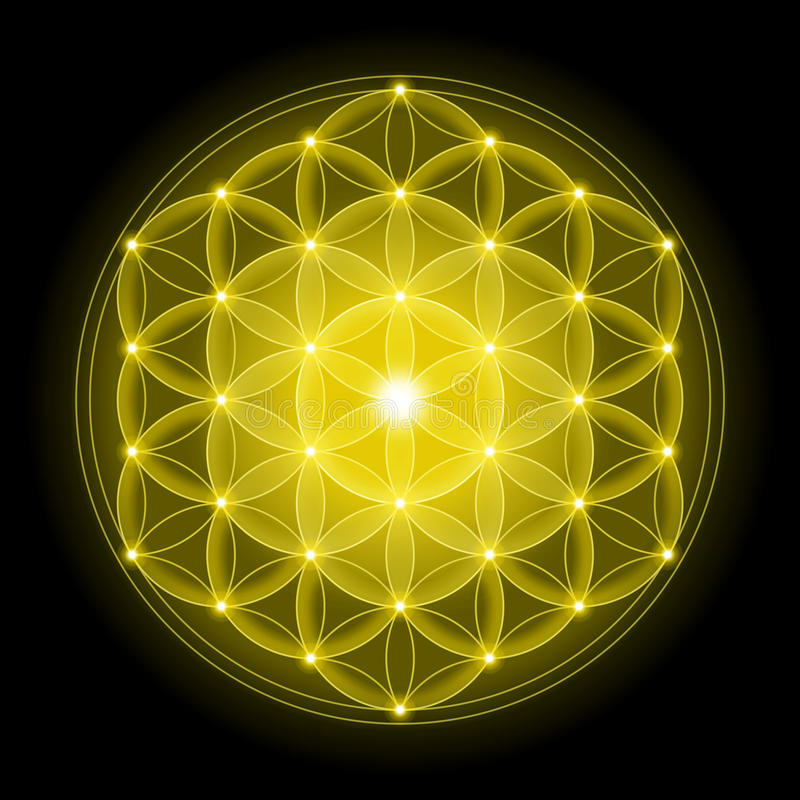Quantum energy research
Research and development of clean renewable energy sources
Environmentally friendly source of renewable energy
The idea of harnessing ambient energy in the form of light, vibration, heat, radio waves, etc. is becoming more popular and attractive. Energy is everywhere and it is limitless and it will be collected from the surrounding space and used in stand-alone gadgets and devices WITHOUT THE NEED OF CHARGING or EXTERNAL POWER SUPPLY. Quantum energy is an environmentally friendly nature-like technology and a source of renewable energy.
In this review, we will get acquainted with Triboelectric Nanogenerators (TENG). It is an energy harvesting technology that relies on the coupling effects of contact electrification and electrostatic induction between two solids or a liquid and a solid (materials with different densities). Their varieties have been multiplying since 2014. By 2021, various types of Triboelectric Nanogenerators (TENGs) have been widely demonstrated for use as self-powered energy collectors and sensors and are at the forefront of alternative energy technologies.
Despite the fact that the principles of operation of these devices are not entirely clear even to the inventors, and the effectiveness of these devices is not yet very high, and the safety of using some still leaves questions. Despite all this, these devices are showing impressive results and increase the chances that such models of power generators of the smallest size become a new source of renewable energy.
In this review, we will get acquainted with Triboelectric Nanogenerators (TENG). It is an energy harvesting technology that relies on the coupling effects of contact electrification and electrostatic induction between two solids or a liquid and a solid (materials with different densities). Their varieties have been multiplying since 2014. By 2021, various types of Triboelectric Nanogenerators (TENGs) have been widely demonstrated for use as self-powered energy collectors and sensors and are at the forefront of alternative energy technologies.
Despite the fact that the principles of operation of these devices are not entirely clear even to the inventors, and the effectiveness of these devices is not yet very high, and the safety of using some still leaves questions. Despite all this, these devices are showing impressive results and increase the chances that such models of power generators of the smallest size become a new source of renewable energy.
The triboelectric effect is the phenomenon of the appearance of electric charges in some materials when they rub against each other. This effect is essentially a manifestation of contact electrification, which has been known to mankind since antiquity.
Thales Miletsky observed this phenomenon in experiments with an amber stick rubbed with wool. By the way, the very word "electricity" originates from there, because in translation from Greek the word "electron" means amber.
Thales Miletsky observed this phenomenon in experiments with an amber stick rubbed with wool. By the way, the very word "electricity" originates from there, because in translation from Greek the word "electron" means amber.

In this article, we will look at 4 options for nanogenerators:
Graphene energy technologies. Neutrino energy.
Electromagnetic. Energy from electromagnetic waves from the surrounding space.
Contact. For use in smart clothes.
Wind. Collects energy from a simple wind.
Water. Collects the energy of falling water.
QUANTUM ENERGY
Graphene Energy Technologies
This is undoubtedly the most affordable and environmentally friendly energy generation technology to meet the growing demand for energy and the basis for a new environmentally friendly coexistence between man and nature.
The mechanical and electronic properties of two-dimensional materials make them promising for use in flexible electronics. Their atomic thickness and the possibility of large-scale fusion could allow the development of a "smart skin" that can transform ordinary objects into an intelligent distributed sensor network.
Many important components of such a distributed electronic system have already been demonstrated (eg, transistors, sensors, and memory devices based on two-dimensional materials). In the future, new discoveries await us: an efficient, flexible and constantly working solution for collecting energy, which is necessary for autonomous systems.
We express our readiness to expand research work and cooperation with a wide variety of stakeholders around the world and invite you to cooperate in the creation and implementation of graphene energy technologies based on our green graphene.
Many important components of such a distributed electronic system have already been demonstrated (eg, transistors, sensors, and memory devices based on two-dimensional materials). In the future, new discoveries await us: an efficient, flexible and constantly working solution for collecting energy, which is necessary for autonomous systems.
We express our readiness to expand research work and cooperation with a wide variety of stakeholders around the world and invite you to cooperate in the creation and implementation of graphene energy technologies based on our green graphene.
Interested in cooperation in the development and implementation of graphene technologies?
We are an eco-friendly manufacturer of "green" graphene with our own technology, which has been improved from 2010 to 2018. We obtain environmentally friendly materials with programmable properties as a result of waste recycling. Therefore, our materials remain available and we are always ready to expand the production capacity for the production of graphene, as this leads to the cleansing of the planet from garbage and the creation of materials of unique qualities that will last for centuries, or can be "reprogrammed."
We are open for cooperation and ready to advise you on the introduction of graphene and its derivatives into your processes. We invite individuals and groups to send their proposals and questions by any means of communication convenient for them. We will help you formulate a realistic technical task and implement a full R&D cycle on a modern scientific and production base, with the involvement of leading world experts, guaranteeing the safety of confidential information and high quality results.
We are open for cooperation and ready to advise you on the introduction of graphene and its derivatives into your processes. We invite individuals and groups to send their proposals and questions by any means of communication convenient for them. We will help you formulate a realistic technical task and implement a full R&D cycle on a modern scientific and production base, with the involvement of leading world experts, guaranteeing the safety of confidential information and high quality results.
The researchers say the device can generate sustainable energy from a breeze.
ENERGY FROM TOUCH
Contact mode
Technology was being developed for use in smart clothing. Converts movement into stored energy. The accumulated electricity can then be used to power mobile phones or other devices.
A new model is presented, which comprehensively explains the principles of operation of contact mode triboelectric nano-generators (TENG) based on Maxwell's equations.
This technology can be applied to more than just clothing, it can be integrated into the sidewalk, so when people are constantly walking on it, it can store electricity, which can then be used to power strip lamps or in the tires of a car so that they can power the car. More details: https://pubs.rsc.org/en/content/articlelanding/201....!divAbstract
A new model is presented, which comprehensively explains the principles of operation of contact mode triboelectric nano-generators (TENG) based on Maxwell's equations.
This technology can be applied to more than just clothing, it can be integrated into the sidewalk, so when people are constantly walking on it, it can store electricity, which can then be used to power strip lamps or in the tires of a car so that they can power the car. More details: https://pubs.rsc.org/en/content/articlelanding/201....!divAbstract

Fig. 1 (a) The electric field distribution perpendicular to an infinitely large charged sheet. (b) The overall electric field resulting from two oppositely charged infinitely large layers, and, (c) deriving the expression for the overall electric field originating from two oppositely charged surfaces. (d) The structure and the charge distribution of a typical contact-mode TENG.
ENERGY FROM ELECTROMAGNETIC WAVES
Collector of energy from electromagnetic waves
Electromagnetic waves contain energy, and there have been several methods used to generate this power, up to crystal radios a century ago that used their energy to work from the radio waves they were receiving.
The researchers published the results in Nature and demonstrated so far modest advances in obtaining energy from Wi-Fi signals, developed a thin and flexible rectenna (antenna for collecting radio waves) - just a few atoms thick.
Wi-Fi energy is collected as AC, collected by a semiconductor made from molybdenum disulfide combined with a Wi-Fi antenna range, and converted into usable DC energy. The team reports that 40 μW of power can be obtained from a typical 150 μW Wi-Fi signal, which is almost 30 percent, and in the future 50 or more.
More details: https://www.nature.com/articles/s41586-019-0892-1
The researchers published the results in Nature and demonstrated so far modest advances in obtaining energy from Wi-Fi signals, developed a thin and flexible rectenna (antenna for collecting radio waves) - just a few atoms thick.
Wi-Fi energy is collected as AC, collected by a semiconductor made from molybdenum disulfide combined with a Wi-Fi antenna range, and converted into usable DC energy. The team reports that 40 μW of power can be obtained from a typical 150 μW Wi-Fi signal, which is almost 30 percent, and in the future 50 or more.
More details: https://www.nature.com/articles/s41586-019-0892-1

Fig. 1 | Flexible rectenna based on a 2D self-aligned MoS2-heterostructure Schottky diode. a, Schematic of a lateral Schottky diode based on a MoS2 semiconducting–metallic (2H–1T/1T′) phase junction. The gold layer forms an Ohmic contact with metallic (1T/1T′) MoS2, which also forms an Ohmic contact with semiconducting (2H) MoS2. The palladium layer forms a Schottky contact with semiconducting (2H) MoS2. The antenna converts electromagnetic radiation in the Wi-Fi band into an a.c. signal. The lateral MoS2 diode is fast enough to rectify the a.c. signal and generate a d.c. signal to power a load at its output. The blue and red arrows indicate a.c. and d.c. currents, respectively. Inset, scanning electron microscopy image of a MoS2 Schottky rectifier. Channel width, 40 μm. b, The d.c. I–V characteristics of the MoS2 Schottky diode in the logarithmic scale. Inset, band diagram of the MoS2 Schottky junction under forward bias V. Φbi is the built-in potential of the MoS2 Schottky diode, e is the electron charge and EFindicates the Fermi level of the semiconductingMoS2. c, Currentresponsivity of the MoS2 Schottky diode at different external bias points.
Cranial Drill
Investigations on Piezo Active Layer of Low Frequency Cantilever Structured Vibration Energy Harvester for Cordless Cranial Drill
Продолжите заполнение формы или напишите нам по адресу info@teslar.site
Укажите свои контактные данные и мы свяжемся с Вами
ENERGY FROM SIMPLE WIND
Harvesting wind energy
Researchers have developed a "tiny wind turbine" that captures wind energy that is as light as the wind generated by a brisk walk.
According to researchers in the journal Cell Reports Physical Science, the device can power up to 100 LED bulbs, as well as temperature sensors with energy from light winds such as those generated by brisk walks.
The scientists' immediate goal is to make it more efficient in order to provide uninterrupted and stable power supply to small mobile devices by developing a coin-sized nanogenerator. The second goal is to complement wind turbines to cope with winds they currently cannot reach, i.e. to increase the power of the device to 1000 watts so that it can compete with traditional wind turbines and place these devices where traditional wind turbines are not available. for example in the mountains or on the rooftops to provide sustainable energy.
Unlike turbines, which use coils and magnets, where costs are fixed, the new design allows for the selection of inexpensive and affordable materials. The miniature generator can also be used safely in nature reserves or cities because it has no rotating parts.
More details:
https: //www.sciencemag.org/news/2020/09/tiny-devic ...
https: //www.theguardian.com/environment/2020/sep/2 ...
According to researchers in the journal Cell Reports Physical Science, the device can power up to 100 LED bulbs, as well as temperature sensors with energy from light winds such as those generated by brisk walks.
The scientists' immediate goal is to make it more efficient in order to provide uninterrupted and stable power supply to small mobile devices by developing a coin-sized nanogenerator. The second goal is to complement wind turbines to cope with winds they currently cannot reach, i.e. to increase the power of the device to 1000 watts so that it can compete with traditional wind turbines and place these devices where traditional wind turbines are not available. for example in the mountains or on the rooftops to provide sustainable energy.
Unlike turbines, which use coils and magnets, where costs are fixed, the new design allows for the selection of inexpensive and affordable materials. The miniature generator can also be used safely in nature reserves or cities because it has no rotating parts.
More details:
https: //www.sciencemag.org/news/2020/09/tiny-devic ...
https: //www.theguardian.com/environment/2020/sep/2 ...
ENERGY OF FALLING WATER
Energy from a drop of water
Triboelectric nanogenerators can harvest the energy of falling water. A research team led by scientists from the City University of Hong Kong (CityU) has developed a Droplet Electric Generator (DEG), which could be a new source of renewable and extremely cheap energy.
In the long term, the new design can be applied and installed on a variety of surfaces where liquid is in contact with a solid, in order to fully utilize the low frequency kinetic energy of water. It can be applied on the surface of a ferry hull, shoreline, up to the surface of umbrellas, or even inside water bottles.
More details:
https: //naukatehnika.com/triboelektricheskie-nanog ...
https: //www.sciencedirect.com/science/article/abs / ...
In the long term, the new design can be applied and installed on a variety of surfaces where liquid is in contact with a solid, in order to fully utilize the low frequency kinetic energy of water. It can be applied on the surface of a ferry hull, shoreline, up to the surface of umbrellas, or even inside water bottles.
More details:
https: //naukatehnika.com/triboelektricheskie-nanog ...
https: //www.sciencedirect.com/science/article/abs / ...
"A drop of water generates energy for 100 LED bulbs"
"Rains can be a source of electrical energy"
"Rains can be a source of electrical energy"
Other scientific research
